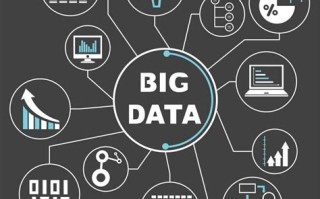Title: Beginner's Guide to Big Data: A Comprehensive Introduction
In the realm of data, the term "Big Data" has become increasingly ubiquitous, representing the massive volumes of structured and unstructured data that inundate businesses on a daily basis. Whether it's information from social media, transaction records, sensor data, or any other digital source, harnessing the power of Big Data has become imperative for organizations seeking to gain insights, make informed decisions, and stay competitive in today's fastpaced world. This beginner's guide aims to demystify the concept of Big Data, elucidate its significance, and provide a roadmap for beginners embarking on their journey into this fascinating field.
Understanding Big Data:
1.
Definition and Characteristics of Big Data:
Big Data is characterized by three main attributes: Volume, Velocity, and Variety.
Volume:
Refers to the sheer amount of data generated and collected from various sources.
Velocity:
Denotes the speed at which data is generated, processed, and analyzed.
Variety:
Encompasses the diverse types and formats of data, including structured, semistructured, and unstructured data.2.
The Three Vs Expanded:
Over time, the concept of Big Data has evolved to include additional dimensions such as Variability, Veracity, and Value.
Variability:
Highlights the inconsistency and volatility of data flows.
Veracity:
Emphasizes the reliability and trustworthiness of data.
Value:
Focuses on the importance of extracting meaningful insights and value from Big Data.Technologies and Tools:
1.
Data Storage and Management:
Introduction to traditional databases (SQL) and NoSQL databases (e.g., MongoDB, Cassandra) for handling structured and unstructured data.
Overview of distributed file systems like Hadoop HDFS and cloudbased storage solutions such as Amazon S3.
2.
Data Processing and Analysis:
Introduction to Apache Hadoop ecosystem components, including Hadoop MapReduce, Hadoop Distributed File System (HDFS), and Apache Spark for distributed data processing.
Overview of data processing frameworks like Apache Kafka for realtime stream processing.
3.
Data Visualization and Reporting:
Introduction to data visualization tools such as Tableau, Power BI, and Python libraries like Matplotlib and Seaborn for creating insightful visual representations of data.
Challenges and Considerations:
1.
Data Privacy and Security:
Addressing concerns related to data privacy, compliance with regulations (e.g., GDPR, CCPA), and implementing robust security measures to safeguard sensitive data.
2.
Scalability and Performance:
Challenges associated with scaling infrastructure to handle increasing data volumes and ensuring optimal performance of data processing and analysis tasks.
3.
Skills and Talent Gap:
Recognizing the growing demand for skilled professionals proficient in Big Data technologies and fostering a culture of continuous learning and development within organizations.
Getting Started:

1.
Educational Resources:
Recommending online courses, tutorials, and books for beginners to learn Big Data concepts, technologies, and tools.
2.
HandsOn Experience:
Encouraging aspiring Big Data professionals to engage in practical projects, participate in hackathons, and contribute to opensource Big Data initiatives to gain realworld experience.
3.
Networking and Community Involvement:
Emphasizing the importance of networking with industry peers, joining Big Data communities and forums, and attending conferences and meetups to stay updated with the latest trends and developments.
Conclusion:
Embarking on a journey into the realm of Big Data can be both exhilarating and daunting for beginners. However, armed with the right knowledge, skills, and resources, aspiring data enthusiasts can navigate this vast landscape with confidence and unlock a world of opportunities. By understanding the fundamental concepts, familiarizing oneself with the relevant technologies and tools, and embracing a mindset of continuous learning and innovation, individuals can position themselves for success in the dynamic field of Big Data.
This beginner's guide serves as a springboard for those eager to dive into the fascinating world of Big Data, offering insights, guidance, and practical tips to help beginners embark on their journey with clarity and purpose. As the volume and complexity of data continue to grow exponentially, the ability to harness the power of Big Data will become an indispensable skill for professionals across various industries, driving innovation, fueling growth, and shaping the future of business and technology.
Additional Resources:
[Big Data for Dummies (PDF)](https://www.dummies.com/store/product/BigDataForDummies.productCd1118504224.html)
[Coursera: Big Data Courses](https://www.coursera.org/browse/datascience/bigdata)
[edX: Big Data & Analytics Courses](https://www.edx.org/learn/bigdata)
[Apache Hadoop Documentation](https://hadoop.apache.org/docs/)
[MongoDB University](https://university.mongodb.com/)
[Kaggle: Data Science Competitions](https://www.kaggle.com/competitions)
标签: 大数据入门级开发者认证 大数据入门案例 大数据入门最好的书 大数据入门的四个必备常识 大数据入门书籍



还木有评论哦,快来抢沙发吧~